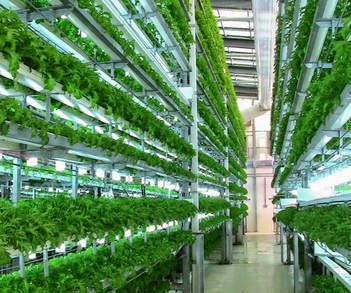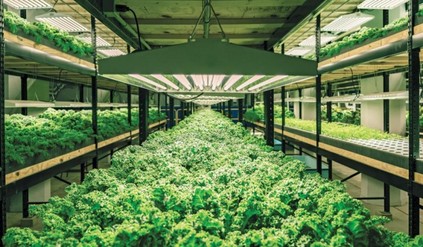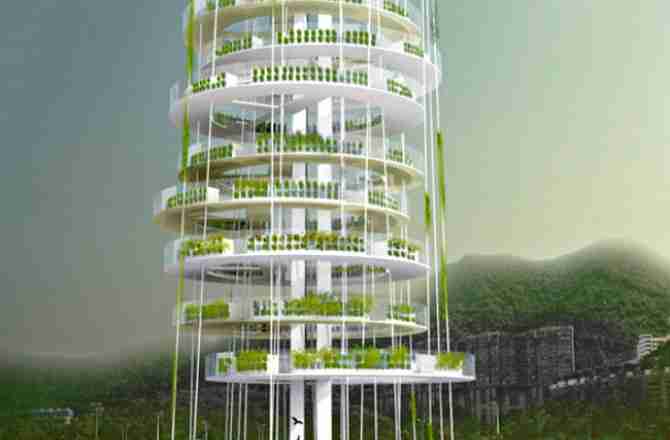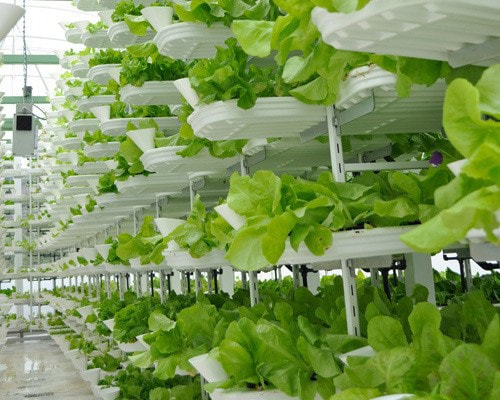Indoor Farming
In recent years the idea of growing food inside buildings has started to gain traction with many Indoor farms coming into production to supply urban areas with fresh vegetables.
There are big advantages to growing food inside as you can apply complete control to the plants intake of nutrients, warmth and UV light. The indoor farmer has the ability to avoid pest damage and monitor his crops at the push of a button. Indoor farming systems can be stacked to create a very efficient use of space and can implement a factory style of sowing, growing and harvesting. There is huge potential for indoor farming to become a major part of urban farming in the modern world.
There are however drawbacks! I would say that these systems are only beneficial for certain types of crops such as cut and come again mushrooms and salad greens. Many of these new indoor farms supply quick fresh produce to the inner city restaurant market. The high energy input makes this type of urban food production completely unsustainable. Usually the amount of calories to produce the crop far outweighs the nutritional calories we back as food. The cost of running the systems and services attributed to this type of urban farming also make it economically unviable to feed the masses but perhaps with renewable technologies we should watch this space as fundamentally growing food next to population density drastically reduces food miles which take up a huge amount of the energy getting food from farm to plate.
I would say Indoor farming has a way to go but in certain circumstances is a very efficient way of producing some crops where the food is needed. I am sure there is huge potential for future architecture to incorporate green space and urban farming into its disciplines and fabric.




